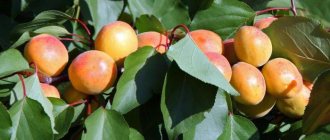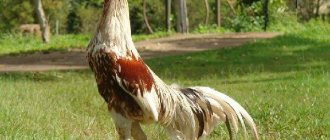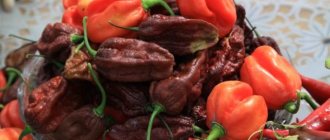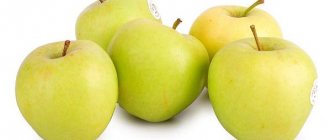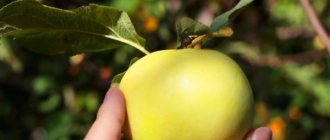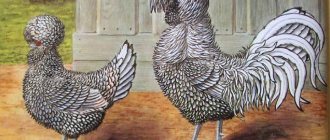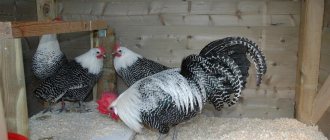Pavlovsk chickens are one of the best decorative breeds of domestic selection. They are popular among poultry farmers due to their exterior characteristics. The birds are more similar to pheasants than to chickens.
Pavlovian chickens
The almost extinct breed of chickens “Pavlovskaya” is again gaining popularity among poultry farmers
in the century before last, Pavlovian chickens were repeatedly recognized as “royal” at exhibitions and received the status of the best breed
History of the breed
Pavlovsk birds are one of the oldest breeds created on the territory of the Russian Federation. Due to the fact that the birds were bred a very long time ago, the true history of the origin has not been preserved to this day, and the scientists who worked on the breed and ancestors of Pavlovsk chickens are also unknown.
The main reason for such an irresponsible attitude towards history lies in the fact that scientists and chickens were previously treated without respect. The nobility and poultry farmers gave preference to chickens of foreign origin, and they learned about Pavlovsk birds at the end of the 19th century, when the birds were at the stage of death.
The name Pavlovsky was given in honor of a settlement in one of the provinces - Pavlovo. It was famous for its blacksmith craftsmen, who were extremely popular in Rus'. In addition to blacksmithing, the residents of Pavlov were engaged in breeding domestic birds; they gave preference to foreign breeders, so many representatives of birds were brought from other countries. One can guess that the parents of the Pavlovskys were precisely such representatives.
In the 19th century, the breed began to travel around the world, first they came to Turkey, then to Great Britain. In Turkey they were given the name - Sultan's. But from all the characteristics it was clear that we were talking about Pavlovsk birds.
Ordinary people in the village of Pavlovo were able to create an amazing decorative breed, which over time became the standard for all decorative domestic birds. Some breeders are confident that these birds became the founders of crested chickens in Europe. Today's poultry farmers have been able to achieve the creation of an ancient breed that existed in the 19th century.
How to raise chickens
We have already noted that due to price and poor distribution, Pavlovsk chickens are not widely available to private farms. Those who could afford to have such beauty keep 1-3 heads in their yard.
But if you managed to get at least a couple (a rooster and a chicken), then you can breed them yourself. The laying hen will hatch the chicks in 21 days, and then everything depends on you.
Proper feeding
In order for the chicks to grow strong and healthy, they need to be fed properly:
- you need to start with a boiled egg, semolina or fine corn grits, low-fat cottage cheese, crushed herbs;
- be sure to include vitamin and mineral supplements in the menu every other day;
- disinfect drinking bowls, feeders, and replace bedding in a timely manner;
- Place a container with calcined river sand next to the feeders;
- at the age of 10–15 days, chickens can be switched to feed appropriate for their age, and also continue to be given greens, vegetables, vitamins, and minerals.
Important! Chickens should not be fed milkweed, celandine or any spoiled food.
The necessary vitamins are A, E, D, group B. It is advisable that the chicks receive them from natural products.
Caring for young animals
Chickens are hatched using a hen or an incubator. Newborn babies are placed in a room with a temperature of +28...+32 °C and a humidity of 55–65%, without drafts. In the first days of life, good nutrition and dry bedding are very important for them.
Over time, when the young generation gets a little stronger, the temperature in the chicken coop can be lowered to +25 °C, and from the tenth day of their life it should be reduced weekly by 3 °C to +18 °C. The fact that the chicks are comfortable will be indicated by their behavior. They will be active and have a good appetite. If they are cold, they will gather in groups and begin to squeak.
Vaccination
Pavlovsk chickens are not afraid of colds, but infectious diseases can attack them, so young animals should be vaccinated against Marek's, Newcastle and Gumboro diseases, as well as preventive measures against coccidiosis.
Each poultry farmer decides independently whether to vaccinate his flock. But if there are outbreaks of the listed diseases in your area, then it is best to get vaccinated.
Description of the exterior of Pavlovsk chickens
The breed of chickens has an extravagant appearance and capricious character.
Appearance standard
The current standard for chickens is described as follows:
- the head is small;
- the crest is pressed, looks like a curl;
- there is a long thick collar around the neck;
- feathers frame the eyes and cheeks;
- the lobes and comb are small;
- the beak is straight, the nostrils are raised;
- eyes are small;
- resemble pheasants;
- the body is massive;
- small back;
- feathers are spotted, white, golden, silver in the middle;
- the tail is beautiful;
- the wings fit securely to the body and are developed;
- legs are feathered on both sides;
- the fingers are covered with small feathers;
- paws are blue-black.
Inadmissible deviations in the exterior
Scientists have been breeding purebred Pavlovsk for a long period of time, so the standard of chickens is of great importance.
Unacceptable characteristics of purebred birds:
- a huge number of feathers;
- lack of feathers on the paws;
- extra color that does not correspond to the standard color;
- the presence of a fifth toe on the paw;
- too large birds;
- a huge crest that does not lie close to the head;
- different color of legs.
Breed subspecies
Breeders distinguish two main subspecies: silver and golden.
Silver
This subspecies is the most common. In birds, white feathers predominate, along which there are black spots of almost the same size.
Golden
At the tip of the feathers, the brown color merges with black, creating a border that passes from the crest and neck to the shoulders. This unusual color forms the letter V.
Advantages and disadvantages
Like other birds, this breed has pros and cons; they must be taken into account before breeding it.
Advantages of the breed:
- unusual appearance;
- unpretentiousness;
- eat small amounts of food;
- a high percentage of chicks survive;
- excellent quality meat and eggs.
Disadvantages of the breed:
- average productivity;
- the risk of purchasing non-purebred young animals.
Production characteristics
The breed is classified as decorative and today its representatives can be seen at exhibitions.
Purpose of the breed
Although the breed of domestic birds is classified as decorative, you need to take into account all its indicators. The main ones are: average egg production, rapid weight gain, excellent hatchability and safety of the young. Thanks to these indicators, this breed can be conditionally classified as a meat-egg group.
Birds are bred on farm plots, villages and private homes.
Weight
Representatives of this breed are not classified as giant birds. Small roosters reach a weight of 1.8 kg, adults up to 3 kg. The weight of females does not exceed 2 kg. Bird meat is very tasty and juicy.
Egg production
Egg production is low. In 12 months you can get from 160 to 260 pieces from one chicken. The shell can be beige or white. Egg weight is about 60 g.
Hens have a brooding instinct; bird love helps hatch approximately 92% of chicks. Breeders often use Pavlovsk chickens to hatch the offspring of other birds.
Laying hens may not sit in the nest and lay their offspring in another place. To prevent this from happening, place white decoy pebbles in the nests.
Productivity
Pavlovsk chickens have good productivity indicators. They are classified as both meat and egg-laying species. Precocity does not worsen performance. The weight of a rooster reaches 3 kg, chickens - 2 kg. The result is dietary meat with a low fat content.
The average laying hen produces 300 eggs per year.
She becomes capable of this from the sixth month of life. The usual egg weight is 50 g. Chickens are distinguished by a pronounced maternal instinct. The young survive almost completely. Unlike other breeds, pavlovkas do not stop laying eggs in the winter. Productivity lasts up to five years.
The average Pavlova hen lays 300 eggs per year.
Temperament
Birds are very fast and restless, they love to run. The main distinguishing characteristics are fussiness, maneuverability, and the ability to fly over high obstacles. During flight they can instantly change direction.
Males are distinguished by their cockiness, but despite their not particularly flexible disposition, males get along with other domestic birds. Pavlovsk Decoratives love people, trust them, they are attached to their place of residence, so they do not try to escape. To prevent roosters from fighting or bullying each other or females, it is necessary to build a fenced area for them.
Content Features
One of the advantages of Pavlovsk chickens is their ease of care, but standard conditions must be observed.
Watch a review of the Pavlovsk chicken breed in the following video:
Chicken coop or run
Chickens are not picky. They have rich and dense plumage, so they are not afraid of the cold. They live quietly in unheated rooms, the main thing is that they are protected from drafts and wind. A spacious and cozy chicken coop is considered a good option.
Read the article on how to make a chicken coop yourself.
Birds cannot be raised in cages; they do not tolerate small confined spaces well. Due to excessive activity, birds need constant walks. During the summer season, keeping in the chicken coop is reduced to a minimum; the birds are outdoors all day.
Home improvement
The room should be large, up to 2 m in height, with an area of at least 3 square meters. m. A chicken coop must have a window, or better yet several. A hole with an insulated door is built in the surface of the wall. Perches are built at a height of approximately 0.8 m.
Standard nest size: 0.35x0.35x0.3 cm. The nests are secured and insulating material is laid out inside. The floor must be insulated; it is better to cover it with clay and put straw or sawdust on top. Be sure to wash the feeders. It is better to install them on legs, so the birds will be less likely to scatter food on the floor.
Diet and diet
Birds of Pavlovsk differ from other chickens in that they consume a small amount of food, they are not picky about their diet. During the summer season, greens and any pasture are eaten outside.
In winter, birds should be switched to standard food: grains, vitamins and minerals. With rational feeding, 1 bird consumes approximately 0.05 kg of food per day.
The diet should contain a mixture of vitamins: chopped nettle, fruits and vegetables.
During the winter season, a third of the food consists of solid food. Two thirds are a variety of mash. Food consists of grains, plant mixtures, animal foods and mineral components. Chickens that will hatch eggs and raise babies need protein foods and plenty of vitamins. Protein food for chickens is fish, meat meal, skim milk, low-fat cottage cheese. Legumes, nettles, yeast and meal are of particular importance.
In the first days after birth, babies are fed boiled eggs and low-fat cottage cheese. The egg is mixed with cereal, for example semolina. On the 3rd day, the young animals are fed with alfalfa, clover, boiled potatoes or carrots. On the 5th day, chickens can eat a variety of mash, tops, yeast and grass meal. The rate of development and survival of chicks directly depends on the variety of diet.
If adult chickens cannot receive pasture, then poultry farmers adhere to the standard scheme:
- You need to feed 4 times a day.
- In the morning, a third of the grain crops are given to the chickens, and 2 hours later - the wet mash.
- In the evening, the rest of the grain crops are poured out.
Breeding
Chickens have a highly developed brooding instinct, so they sit on the eggs themselves. It is best not to place more than 10 eggs under a bird. You can also place eggs of other breeds under the Pavlovka, and they will grow them well.
Be sure to read:
Hisek Brown - brown chickens with good health, description and characteristics
The survival rate of chickens is noticeably higher than that of other breeds
Raising chickens
Little chicks are no different from representatives of other breeds. They have excellent vitality, young animals survive almost completely.
Chicks begin to be fed as soon as they become dry after birth. The first complementary food is a boiled egg, finely chopped with the shell ground into powder. Crushed wheat and corn grits are also provided. Water must be freely available.
After full plumage (approximately 60 days), the young animals are no longer heated.
Chick care
Pavlovsky young animals are fluffy, feathers grow quickly. At birth they acquire a color - dark or spotted. Over time, the plumage becomes golden or silver. To create babies, eggs weighing 60 g are selected. The young can be incubated by a hen or a special incubator is used.
Chickens of this breed are good mothers, they warm their offspring and hide them. The kids are taught to look for food and make sure that the chickens don’t get lost.
A separate place is built for the chicks, heaters and lamps are installed. The first five days after the birth of chicks, the room temperature should be kept at +30 degrees Celsius, from the 6th to the 10th day - about +26 degrees Celsius. Then the temperature is gradually reduced to +18 degrees.
The thermometer in the chicken coop is hung at a height of 0.5 m from the floor surface.
Observe the behavior of the young animals; if they do not push, eat well and behave calmly, then everything is normal with the temperature. Temperature is too low: chickens do not eat, gather near heaters, crush weak birds. The temperature is too high: they open their beak, drink often, don’t eat, lie down.
Egg production
The most controversial point is the egg production of the Pavlovsk breed of chickens. According to the standard, a laying hen produces about 160-180 eggs per year, and they are not very large - up to 50 grams in weight. But poultry farmers note record performance indicators for the majority of representatives.
Some hens are capable of producing a hundred more, and at the same time maintaining maximum productivity for 3 years. Such figures allow the decorative beauty to compete with many modern crosses.
Considering the fact that it has incomparably more advantages over modern hybrids, it could successfully replace them.
Reviews from poultry farmers about the Pavlovskaya chicken breed
★★★★★
Alexandra, 55 years old, teacher, Omsk. I love having decorative chickens.
I decided to opt for Pavlovsk beauties. They are so unique and good-natured that I don’t even think about other breeds. At first I bought 10 chickens, the cost of one was approximately 400 rubles. Thanks to their excellent egg production, the birds quickly earned back the money spent on them. ★★★★★
Oleg, 43 years old, farmer, Adler. I always dreamed of breeding that breed of chickens, which in the 90s cost about 2 million dollars at auction.
Finally bought it and don't regret it at all. True, cockerels are cocky, they very quickly find someone with whom they can “argue”, then they calm down for a very long time. ★★★★★
Maria, 64 years old, accountant, Perm. The chickens are simply amazing, they are so warm when I visit them - they always talk to me, let me pet them, they are very interesting.
Not particularly demanding in care. Hide
Add your review
Pavlovsk chickens have not been bred on an industrial scale for a long time. Now they can be found in private farms of lovers of domestic selection of chicken breeds.
0
0
Copy link
Poultry house reviews
Self-respecting entrepreneurs do not undertake to breed the Pavlovsk breed for eggs or meat - for these purposes there are other species that have more weight and much higher egg production. But Pavlovsk chickens are bred mainly as ornamental ones, because their reputation as the most beautiful chickens in Russia remains to this day. Therefore, many people build a good business by breeding this unusual breed.
Golden and silver representatives are sure to be present at any significant exhibition of poultry farmers, bringing their owners a solid income. So, in 1988, when chickens of this breed were very rare, in Italy, at one of the Pavlovsky auctions, a cockerel and a hen were sold for $2.5 million. Now such prices can no longer be expected, but still, breeding such chickens remains highly profitable - with a minimum cost of keeping them, not a single poultry farmer will agree to sell a young chicken for less than 200-300 rubles.
Considering the high fertility and excellent hatchability, this is a good price. You can also sell hatched chicks and eggs for incubation, providing a stable additional source of income. It is for these reasons that the overwhelming majority of descriptions and reviews of the breeding of chickens of this breed are not just flattering, but enthusiastic, especially from the mouths of their mistresses.
